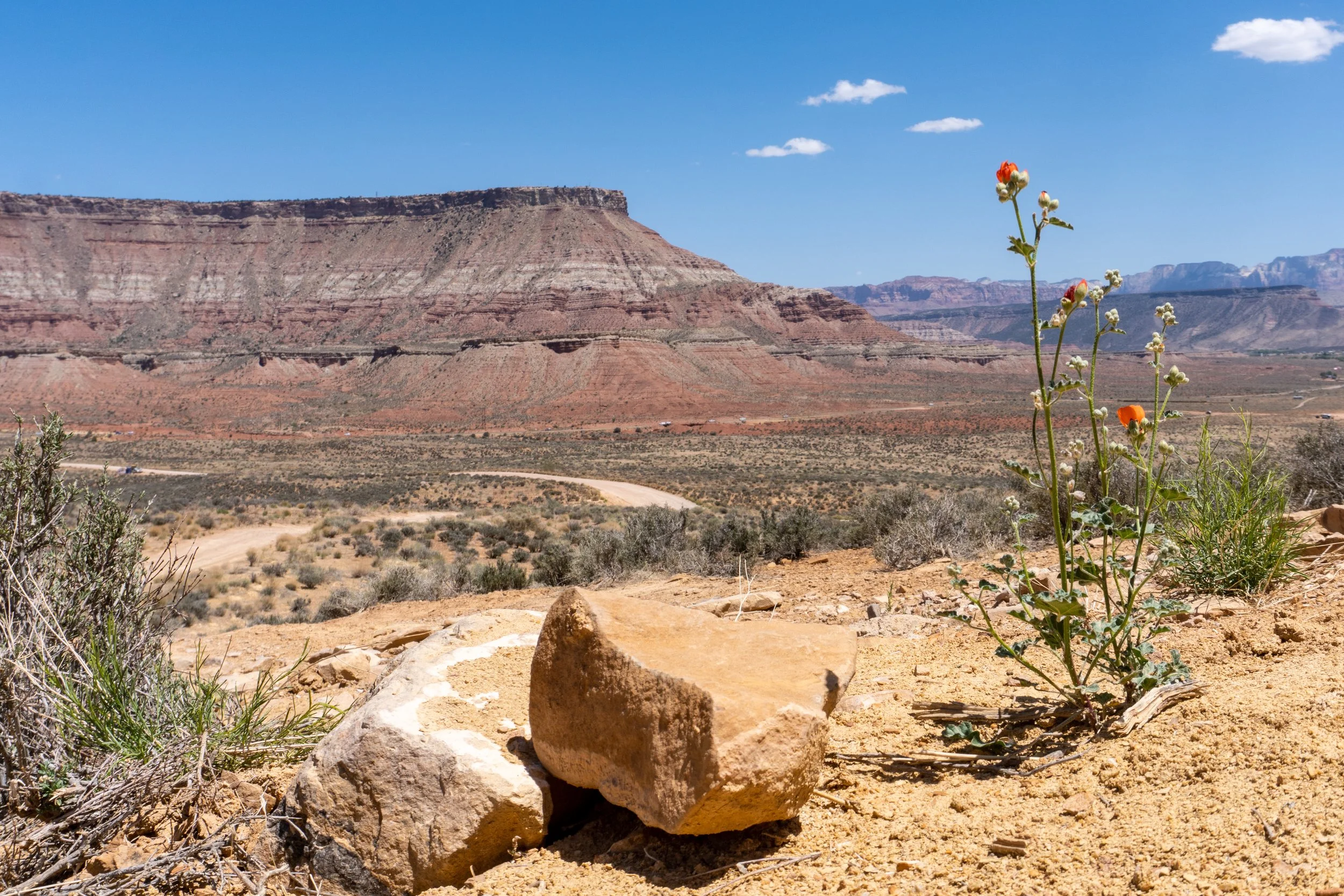Depth
It’s easy to lose the sense of scale of vast landscapes. The evergreen tree on the left foreground gives a sense of distance, and the hiker and small trees on the trail help to demonstrate size.
Imagine printing a picture and setting it down on the floor. As you look at it, you can move your eyes between the left and right edges and the top and bottom edges. The picture will never rise from the floor like a 3D projection. Photography is a two dimensional way of recording a three dimensional world, but there are ways to help the viewer perceive the missing dimension.
One very simple explanation: the human brain does an incredible job of filling in gaps of information. If you’re talking to a friend on a phone with a weak signal, you might only hear 80% of what they say. Sometimes you get the message even though you’re missing individual words. If you have enough context, you can effortlessly and automatically understand the idea your friend is trying to convey. You can use the same concept to help viewers understand depth and scale in landscape photography.
Here’s another example using a tree in the foreground. In this shot, there are several layers of depth. The tree on the left third of the frame leads to the tree in the right third of the frame, which leads to the moose in the middle of a clearing, with more trees in the top third behind them. Incorporating individual elements at varying distances adds depth and can be great framing. With a little practice, you’ll be able to find the balance of getting just enough of the foreground to add depth while keeping the subject clear.
The depth can be further enhanced by using your camera’s manual settings to create a blur in the foreground - but that’s a more advanced subject. The final photo here keeps the flower and rocks in the foreground sharp, but they still add a tremendous amount of depth to the image.
Standing behind a tree adds depth and character to your photos. Hiding behind a tree and zooming in also make it way less dangerous to take pictures of a bull moose.
The wide-open spaces in Utah are emphasized by the small flower and rock in the foreground.
This photo has several components of the American Southwest: orange rock and sand, a huge mesa, and open scrubland. But the thing that really makes this picture work is the depth. The tiny flower reaching up from the ground contrasts with the mesa in the background, which creates a sense of scale. The open scrubland between the flower and mesa enhance the depth, as do the mountains vanishing from the background in the right side of the frame. Just like the moose picture, it’s the individual elements at different distances that make the photo good. The photo is still flat, but a unique perspective allows the viewer’s brain to create a full, rich scene.
It’s important to make sure everything you add to the frame contributes to your goal for the image. As always, remember to incorporate all of the simple rules of photography.


